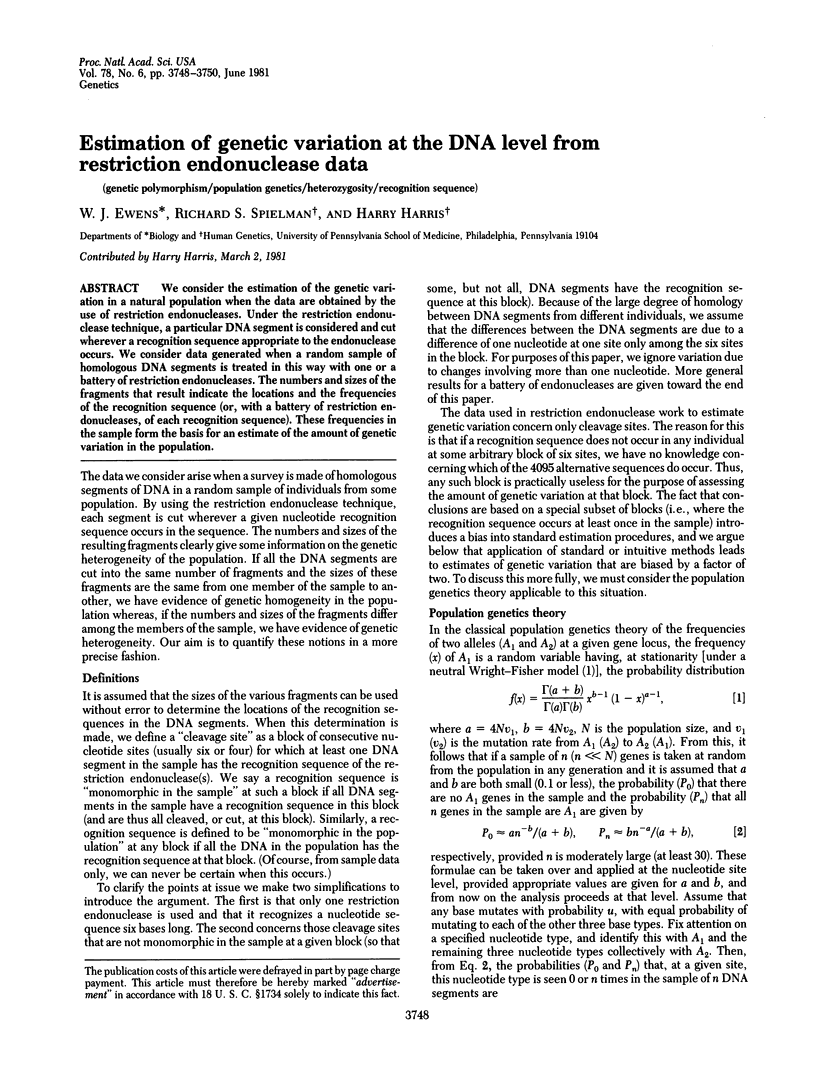Abstract
We consider the estimation of the genetic variation in a natural population when the data are obtained by the use of restriction endonucleases. Under the restriction endonuclease technique, a particular DNA segment is considered and cut wherever a recognition sequence appropriate to the endonuclease occurs. We consider data generated when a random sample of homologous DNA segments is treated in this way with one or a battery of restriction endonucleases. The numbers and sizes of the fragments that result indicate the locations and the frequencies of the recognition sequence (or, with a battery of restriction endonucleases, of each recognition sequence). These frequencies in the sample form the basis for an estimate of the amount of genetic variation in the population.
Full text
PDF


Selected References
These references are in PubMed. This may not be the complete list of references from this article.
- Jeffreys A. J. DNA sequence variants in the G gamma-, A gamma-, delta- and beta-globin genes of man. Cell. 1979 Sep;18(1):1–10. doi: 10.1016/0092-8674(79)90348-9. [DOI] [PubMed] [Google Scholar]


